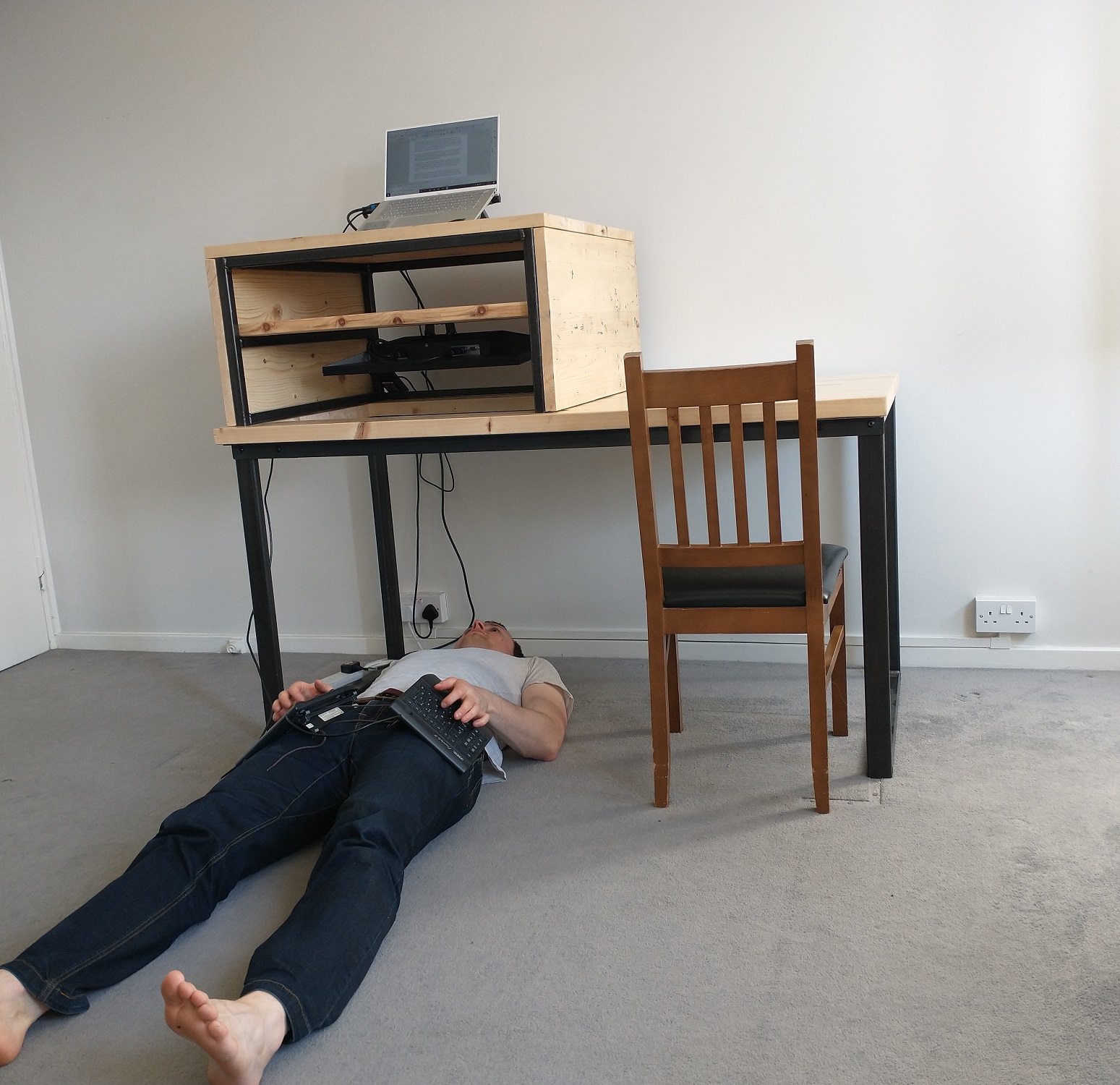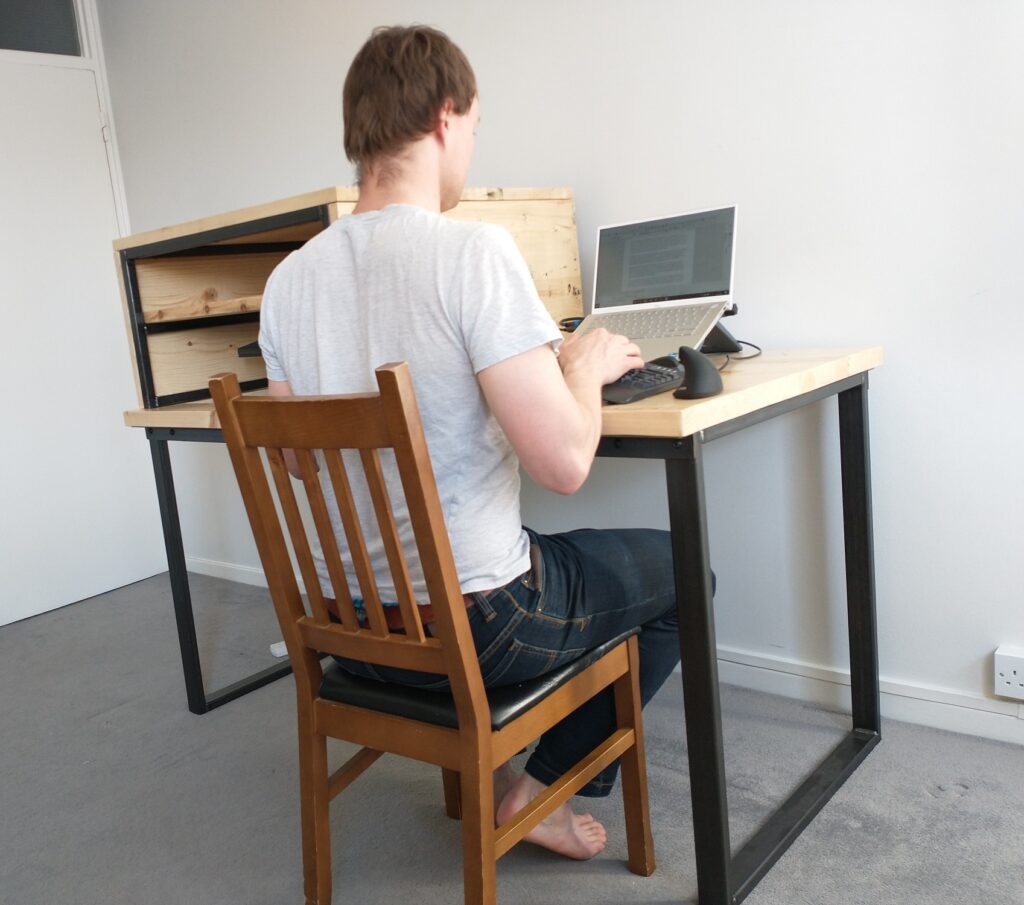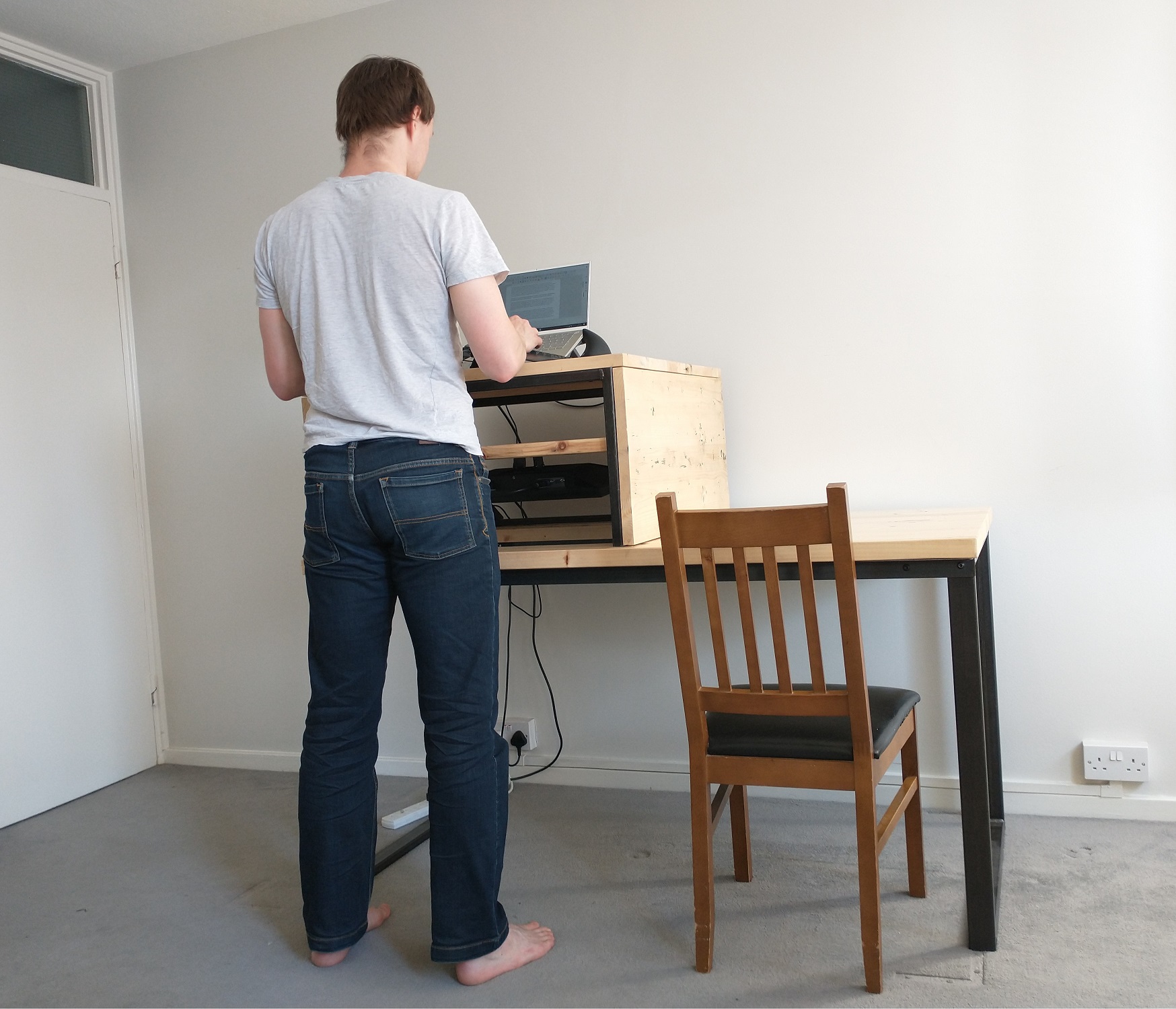Lying Down Desk: The Ultimate Guide To Enhance Your Work-from-Home Experience
Imagine transforming your workspace into a place where comfort meets productivity. The lying down desk has become a trending solution for remote workers and individuals looking to redefine their workspaces. This innovative concept challenges traditional work setups by allowing users to work in a reclined position, promoting relaxation and reducing physical strain. If you're curious about how a lying down desk can improve your daily routine, this article will provide all the information you need to make an informed decision.
The popularity of lying down desks has surged in recent years as more people embrace flexible work environments. With the rise of remote work, individuals are increasingly seeking ways to make their home offices more comfortable and ergonomic. This type of desk caters to those who want to avoid the discomfort associated with traditional desks and chairs while maintaining productivity.
In this comprehensive guide, we will explore the benefits, features, and considerations when choosing a lying down desk. Whether you're a long-time fan of ergonomic furniture or a newcomer to the concept, this article will equip you with the knowledge to determine if a lying down desk is the right fit for your lifestyle.
Read also:Kanye West Tattoo A Deep Dive Into The Art And Symbolism
Table of Contents:
- Biography of Lying Down Desk
- The History of Lying Down Desks
- Benefits of Using a Lying Down Desk
- Ergonomics and Health Considerations
- Design Features of Lying Down Desks
- Lying Down Desk vs. Traditional Desk
- How to Select the Right Lying Down Desk
- Budget Considerations
- Tips for Using a Lying Down Desk Effectively
- The Future of Lying Down Desks
Biography of Lying Down Desk
The lying down desk is a modern innovation designed to address the ergonomic needs of individuals who spend long hours working at a desk. This type of desk allows users to work in a semi-reclined or fully reclined position, reducing strain on the neck, back, and shoulders. Below is a brief overview of its development and key features:
Data and Biodata of Lying Down Desk
| Feature | Details |
|---|---|
| Year of Development | 2010s |
| Primary Purpose | To provide ergonomic support for remote workers |
| Materials Used | Wood, metal, and adjustable mechanisms |
| Popularity | Gained traction during the pandemic |
The History of Lying Down Desks
The concept of lying down desks dates back to ancient civilizations that recognized the importance of posture and comfort in daily activities. However, the modern lying down desk emerged in the early 2010s, coinciding with the rise of remote work and ergonomic furniture. Initially, these desks were designed for medical professionals and individuals with mobility issues, but their versatility quickly made them popular among the general public.
Evolution of the Concept
- Early models focused on basic adjustability.
- Technological advancements introduced features like motorized adjustments and memory settings.
- Contemporary designs prioritize aesthetics and functionality.
Benefits of Using a Lying Down Desk
Switching to a lying down desk offers numerous advantages, particularly for individuals who experience discomfort from traditional setups. Below are some key benefits:
Health Benefits
- Reduces strain on the lower back and neck.
- Improves circulation by allowing a more relaxed posture.
- Minimizes fatigue during long work sessions.
Productivity Gains
- Encourages focus by promoting a comfortable working environment.
- Reduces distractions caused by physical discomfort.
- Supports multitasking by accommodating various working positions.
Ergonomics and Health Considerations
Ergonomics plays a crucial role in the effectiveness of lying down desks. Proper alignment of the body and equipment is essential to maximize comfort and prevent injury. Here are some ergonomic considerations to keep in mind:
Key Ergonomic Features
- Adjustable height and angle settings.
- Support for wrist and arm positioning.
- Compatibility with external monitors and keyboards.
Design Features of Lying Down Desks
The design of a lying down desk significantly impacts its usability and appeal. Modern models come with a variety of features tailored to different user preferences:
Read also:W J Mcbride A Comprehensive Look At His Life Achievements And Legacy
Common Design Elements
- Motorized or manual adjustments.
- Integrated storage compartments for convenience.
- Aesthetic finishes to match home office decor.
Lying Down Desk vs. Traditional Desk
When comparing lying down desks to traditional setups, it's important to weigh the pros and cons of each option. While traditional desks remain popular for their simplicity, lying down desks offer unique advantages:
Key Differences
- Traditional desks are often less adjustable but more affordable.
- Lying down desks provide enhanced comfort but may require more space.
- Both options cater to different user needs and preferences.
How to Select the Right Lying Down Desk
Choosing the perfect lying down desk involves evaluating several factors, including budget, space, and personal preferences. Here are some tips to guide your decision:
Factors to Consider
- Size and weight capacity of the desk.
- Compatibility with your existing office equipment.
- Customer reviews and product warranties.
Budget Considerations
Lying down desks vary widely in price, depending on features and brand reputation. It's essential to establish a budget before making a purchase:
Price Range
- Basic models start at $200-$300.
- Premium options can exceed $1,000.
- Mid-range desks offer a balance of affordability and features.
Tips for Using a Lying Down Desk Effectively
To get the most out of your lying down desk, consider the following tips:
Best Practices
- Experiment with different angles to find your ideal position.
- Use ergonomic accessories like wrist rests and footstools.
- Regularly adjust your setup to prevent repetitive strain.
The Future of Lying Down Desks
As technology continues to evolve, the future of lying down desks looks promising. Innovations such as AI-driven adjustments and smart sensors may become standard features in upcoming models:
Emerging Trends
- Integration with health monitoring devices.
- Customizable designs using sustainable materials.
- Increased focus on accessibility and inclusivity.
Conclusion
In conclusion, lying down desks represent a significant advancement in ergonomic furniture, offering unparalleled comfort and flexibility for modern workers. By understanding the benefits, design features, and considerations outlined in this guide, you can make an informed decision about incorporating a lying down desk into your workspace. We encourage you to share your thoughts and experiences in the comments section below and explore other articles on our site for more insights into ergonomic solutions.
Don't forget to bookmark this page for future reference and consider subscribing to our newsletter for updates on the latest trends in home office furniture!


